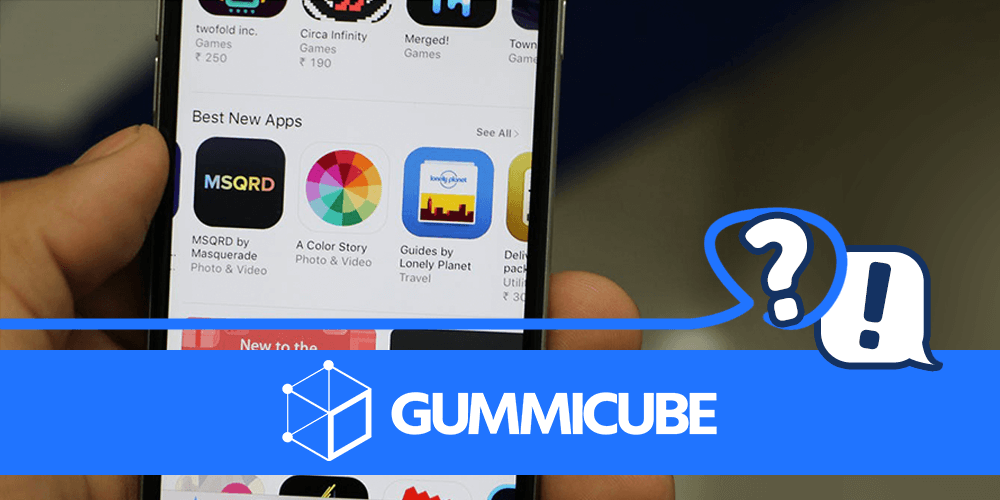
Posted on July 4th, 2018
There’s more to launching an app than just finishing the build and deploying it on the app store. The key to success lies in preparation – what should you know and do pre-launch, before your app goes live? For starters, App Store Optimization is essential, but you should start optimizing and marketing your app before it hits the store. Before you launch your app, here are the steps you should take to ensure a successful launch.

Posted on June 27th, 2018
Say what you will about millennials, but no one can deny that they are making waves in the offices of digital marketers around the globe, forever shifting the landscape of online advertising. As they continue to be the largest generational group on social media, companies are finding new and innovative ways to advertise to them. In light of this, influencer marketing has become increasingly more popular year after year, dating back to the mere conception of social media. In fact, 71% of consumers are more likely to make a purchase based on a social media promotion, and apps are no exception to this strategy. Looking at App Store Optimization (ASO), paid search, and email marketing, is it worth allocating those extra marketing dollars into yet another user acquisition channel for your app? Research has shown that influencer marketing is rated as one of the fastest growing online customer-acquisition channels. This success rate isn’t unwarranted - there’s a reason why the popularity of this strategy only continues to grow. So why is social influencer marketing so effective and how can it impact your app’s visibility? User Trust While social media ads can be wildly effective and drive in visibility and downloads, influencer marketing is perceived as a more organic approach. Users tend to trust promotions by social influencers more than paid advertisements, because:

Posted on June 22nd, 2018
Ever since the App Store has supported iPhone X screenshots, developers have been quick to update their creatives to be up to speed with the latest technology. In fact, the iPhone X was the best-selling smartphone in Q1 2018, so it would only seem natural to want to make adjustments as soon as possible. However, they should proceed with caution and consider the implications of updating screenshots to the device's measurements to avoid unintentional mishaps. The iPhone X’s screen is taller and thinner than previous iPhones, which causes screenshots to shrink when viewed on other devices. Additionally, the different sized screen makes callout texts less visible to those who do not have one. To avoid less screenshot visibility and the potential loss of conversion, developers must first understand screenshot sizing differences.

Posted on June 20th, 2018
If you look across a crowd, you’re sure to see nearly every single person in possession of a mobile device. The number of phones, tablets and other smart devices is gradually increasing due to the simple fact that technology is constantly evolving. As the landscape changes and grows, it will, in turn, lead to new advances that can benefit users, but can also come with the unfortunate downside of possible data and privacy scares. As of 2017, there are roughly 4.77 billion mobile device users, with nearly 50% of the global population having access to the internet. With this number continually growing, it’s not uncommon that some may be worried about their privacy, especially when using various apps. Users’ fears have come to fruition as leaders in tech have gone on the record to apologize for data-mining and privacy breaches. These app developers, CEOs and companies need to rectify these mistakes and earn users’ trust back before they lose it for good.

Posted on June 16th, 2018
Among the announcements from Apple at WWDC 2018 was that Siri, its virtual assistant, would be receiving an upgrade to allow greater interactivity with apps. With SiriKit, iOS and watchOS apps can work with Siri, providing developers new possibilities to increase user retention, discovery and usage.

Posted on June 13th, 2018
Apps

Posted on June 9th, 2018
Apple’s WWDC 2018 has come to a close after a week full of announcements, events and seminars. The tech company announced several upcoming products and updates to iOS and Mac, which may impact the app ecosystem in the coming future. Let’s break down all the important announcements from WWDC 2018: iOS 12 It was no shock when Apple announced that iOS 12 will be coming to Apple devices later this year. In true Apple fashion, the company made the statement early on in their keynote presentation and claimed that iOS 12 will include enhancements to speed and performance even for older devices. The update also includes new features, such as:

Posted on June 6th, 2018
The

Posted on June 1st, 2018
Apple’s Worldwide Developers Conference 2018 (WWDC) is steadily approaching and will be held June 4th-8th in San Jose, CA. This massive event will feature hundreds of sessions, labs, speakers and events, along with highly anticipated announcements on the latest products and software. While WWDC 2017 shook up the app world by redesigning the entire App Store, WWDC 2018 surely won’t disappoint, based off rumors of new hardware, software and more. Here’s what to expect from WWDC 2018: Product & Software Rumors Rumors have been circulating about what Apple will announce at WWDC, leaving many to speculate what else the tech giant has to offer. In the past, WWDC has been the perfect platform to introduce the latest OS. WWDC 2017 introduced macOS High Sierra and the highly anticipated iOS 11 that came with a full App Store redesign, and even the 2016 show introduced macOS Sierra and iOS 10. In true Apple fashion, we can expect to see announcements for the next macOS release and possibly the reveal of iOS 12, as well as watchOS 5 and tvOS 12. App developers should keep a close eye on the new iOS announcements, as they will need to prepare to update their apps accordingly. In addition to software announcements, there is a chance that new hardware will be revealed as well. As previous events have unveiled iPhones 3G, 3GS and 4, the expectation is that Apple will announce a new iPhone SE or iPad Pro, perhaps even a new MacBook. While we do not know the specifics of what will be revealed, there is no doubt that WWDC will include big announcements for upcoming Apple products and software.

Posted on May 30th, 2018
A common phrase known around the world is “there’s an app for that.” If there’s an app for nearly every need, why aren’t more companies making mobile apps? Well, big-name businesses like Starbucks, Macy’s, and more have successfully shifted their business platforms to incorporate mobile. Thanks to their efforts, they’ve managed to capitalize on m-commerce, which alone is forecasted to reach $284 billion (roughly 45% of total US e-commerce) by 2020. Businesses big and small recognize that having a website alone is no longer enough. Apps are the future of communicating and engaging with customers, so businesses should start incorporating mobile apps into their business models sooner rather than later.

Posted on May 25th, 2018
Google has been quietly removing the feature graphic from their Google Play Store, as seen by devices running the latest OS and play store versions. While the update began in late April 2018, more users are reporting that the feature graphic has been removed completely. While it’s uncertain if all Android devices are affected, it’s presumed that the change will soon appear. Since the feature graphic is essential for converting users, its loss will have an impact on all developers. How should they update their ASO strategies to prepare for the change? What’s the Impact? The feature graphic plays a vital role in driving user downloads on the Google Play Store. Our internal research has shown that the feature graphic accounts for up to 30% of all conversions. The removal of the feature graphic could have a detrimental effect on apps that do not update their other creative assets (icon, screenshots and preview video) accordingly. In the absence of the feature graphic, the role of converting users will heavily rely on the app’s screenshots and video, which now position higher on the screen to compensate. Additionally, to fill the gap left from the removal of feature graphic, Google has lifted the restrictions on screenshots sizes, giving developers leeway to add landscape or portrait images of any size to their Google Play Store product page.

Posted on May 23rd, 2018
Have you ever wanted to try an app before downloading it? Developers are constantly looking at new strategies and tools that will help them improve conversion and retention, but many suffer from users that download their app and either open it once and uninstall, or never even open it.













